Creating a resume is challenging for anyone, but it’s even more difficult for those in high-stress industries like culinary arts. In this field, standing out from the crowd and proving you’re the best person for the job is essential. To do that, you need a concise resume, a well-organized resume tailored to the specific job you’re applying to. The summary is your first opportunity as a candidate to impress an employer and showcase why you are the perfect fit for their organization. In addition, your resume must effectively communicate who you are as a professional and how your experience directly aligns with the job description. To help get you started on building an impressive culinary resume, we’ve created this sample culinary resume with tips and tricks to make yours stand out from other applicants.
Baker Resume Example
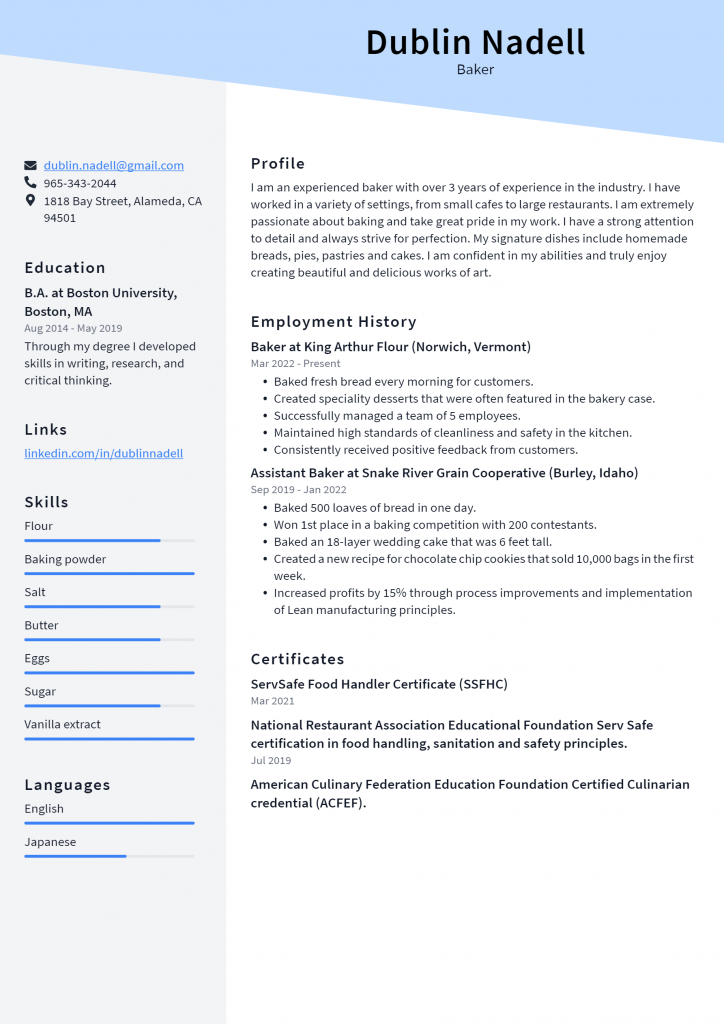
Download This Baker Resume as PDF
Bakery Clerk Resume Example
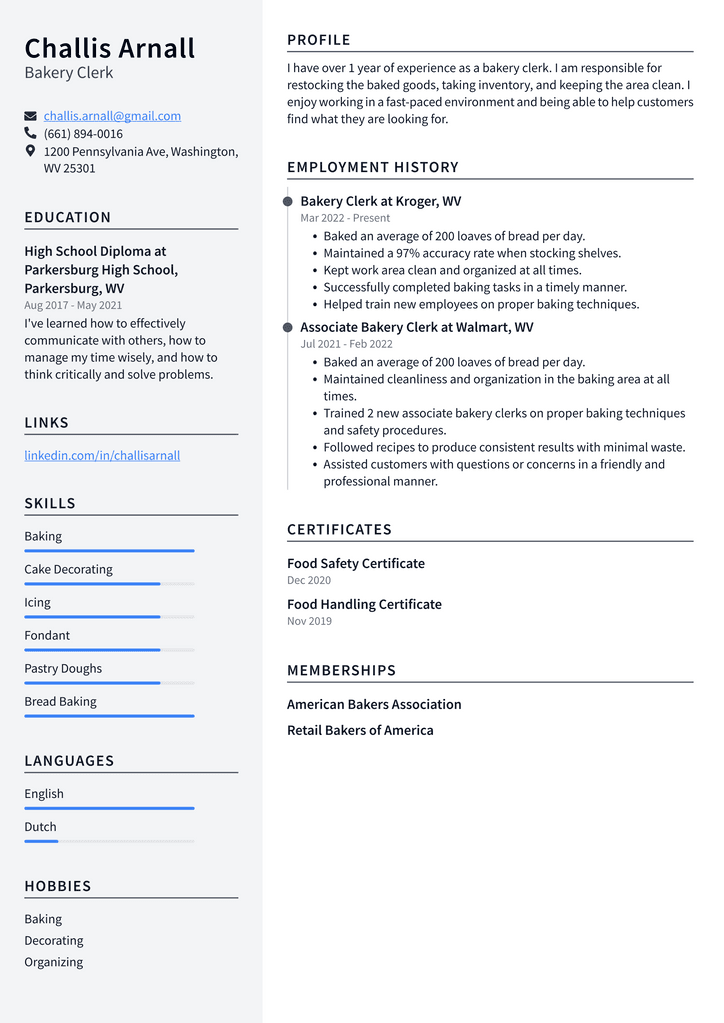
Download This Bakery Clerk Resume as PDF
Bakery Manager Resume Example

Download This Bakery Manager Resume as PDF
Baker’s Assistant Resume Example
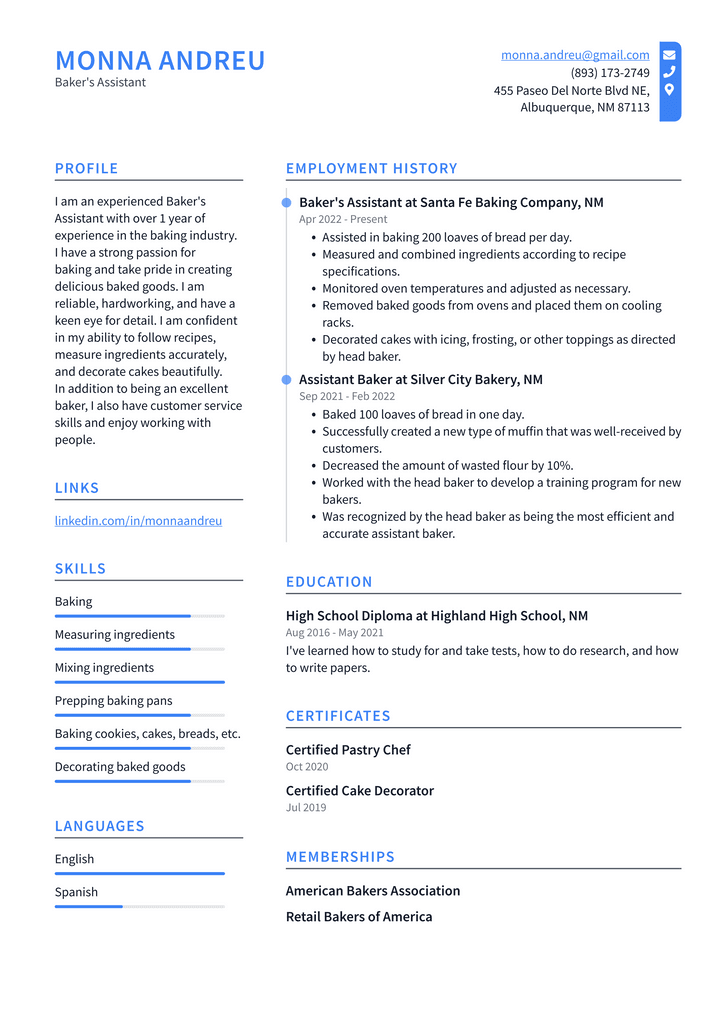
Download This Baker’s Assistant Resume as PDF
Bakery Sales Associate Resume Example
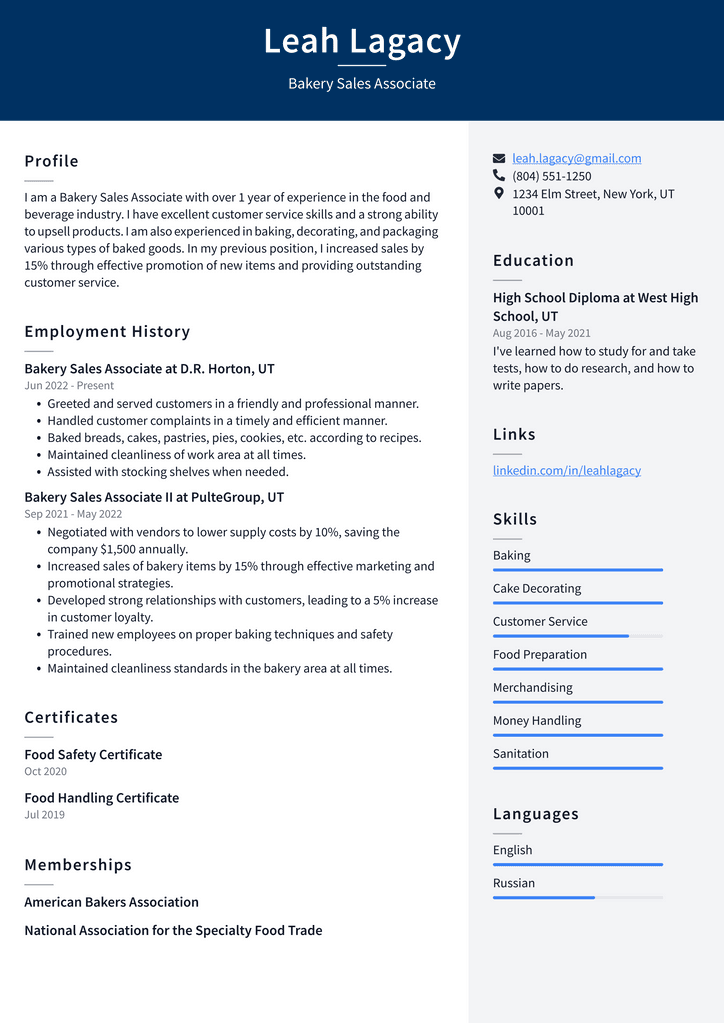
Download This Bakery Sales Associate Resume as PDF
Bakery Team Leader Resume Example
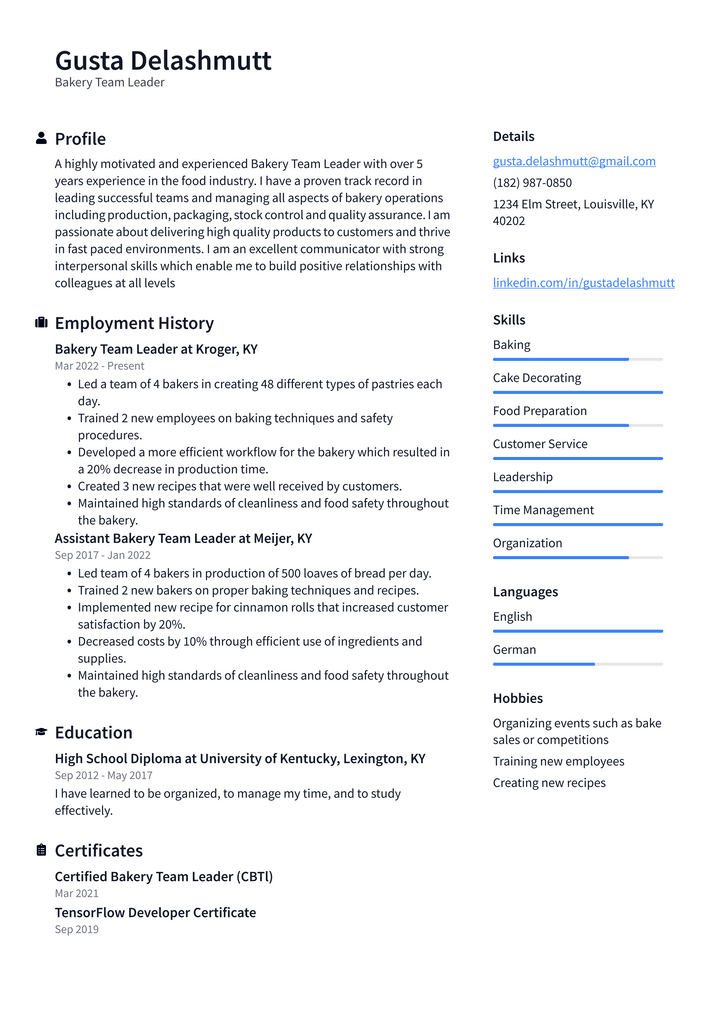
Download This Bakery Team Leader Resume as PDF
Bakery Owner Resume Example
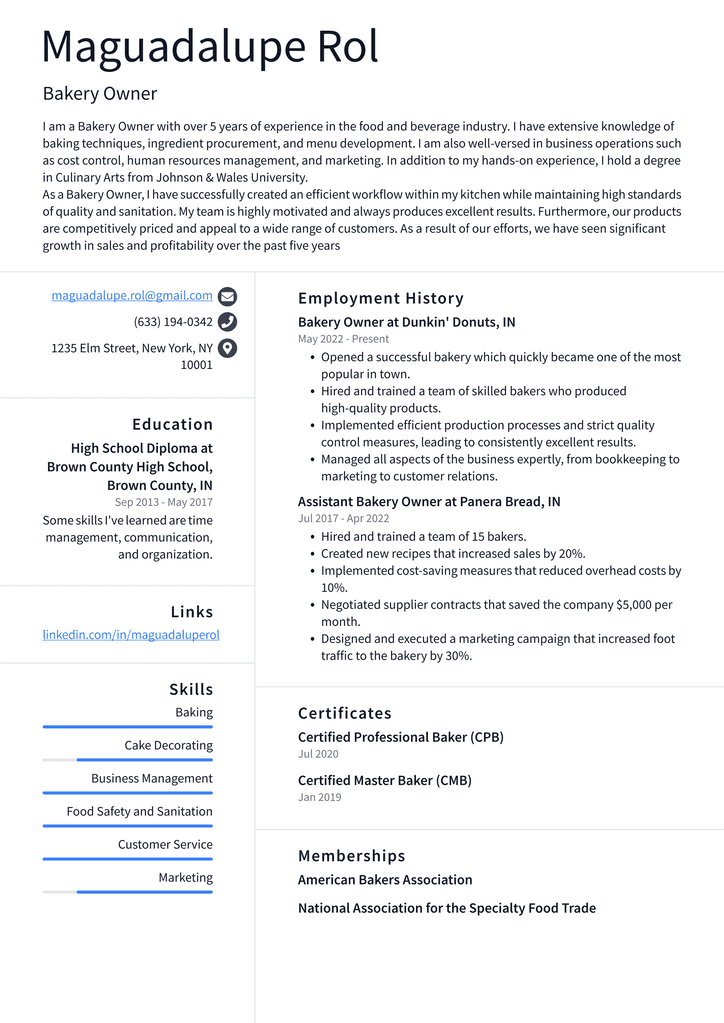
Download This Bakery Owner Resume as PDF
Tips for a successful culinary resume
A thriving culinary resume starts with understanding the type of employer you’re applying to and the job you’re applying for. You’ll want to research the company and position to ensure your resume is tailored to their needs. – Research the company and the position: This will help you determine what skills, experience, and education the company and hiring manager are looking for. This will help you tailor your resume to meet the hiring manager’s needs. – Tailor your resume for each job: Don’t use one resume for every job you apply to. The employer will notice if you’re not tailoring your resume to each job description based on their specific needs. – Standard resume format: Make sure your resume is written in the standard format, meaning each section starts at the top of the page, with one-inch margins, and is double-spaced throughout the document. – Keep it concise: Nobody wants to read a novel on a single page. Limit your resume to one page or two, if needed, and make sure all sections are concise.
Summarize your most relevant experience and skills
The first part of your culinary resume should summarize your most incredible experiences and skills. This section will prove to employers you understand what they’re specifically looking for and that you’re the best person for the job. For instance, if you’re applying for an opening in a high-volume kitchen, your summary should highlight your experience standing in high-volume kitchens. This section should be the first thing an employer reads when skimming through your resume. Your summary should be brief and written in the third person. It should be concise enough to be read in a few seconds and make it obvious why you are the best candidate for the job.
Be clear and concise
Your resume should be as clear and concise as possible so hiring managers can quickly identify your strengths, weaknesses, and areas for improvement. – Each section of your culinary resume should have a single purpose: Don’t include extraneous information that doesn’t relate to the job you’re applying for. – Everything on your resume should be written in the first person: Your resume should only include information that applies to you and your qualifications. – Focus on achievements and outcomes: Employers want to know what you’ve done and how it benefits their organization. Focus on your achievements, quantifiable results, and how they relate to the employer’s needs.
Be aware of formatting and fonts
Your resume’s formatting and font choices can help or hinder your candidacy. While the formatting style should follow the standard resume format, font choices can help attract the attention of hiring managers. – Size: Resume font sizes between 11 and 12 are standard and readable for most. Try a slightly larger font for more effortless reading if your vision is impaired. – Spacing: Be aware of spacing between paragraphs and sections on your culinary resume. This will allow for a more straightforward task and make your resume easier to navigate. – Fonts: Standard resume fonts include Times New Roman, Arial, and Calibri. Be aware of font choices, as they can make or break your culinary resume.
Don’t be afraid to include food vocabulary words in your resume
The culinary industry, in particular, includes equipment, ingredients, and terminology. Don’t be afraid to include industry-specific language on your resume, as this can help you stand out from the crowd. While you don’t want to have a dictionary on your culinary resume, you want to ensure you include the most appropriate equipment, ingredients, and vocabulary words.
Conclusion
A culinary resume should be clear, concise, and practical. It should be easy to read and highlight your skills and experience so potential employers can see that you are qualified for the job. Your culinary resume is your chance to show employers who you are and why you are the right person for the job. With all that in mind, creating a resume is challenging and incredibly daunting if you’re in the culinary industry. If you need help creating an effective culinary resume, this sample culinary resume is a great place to start!